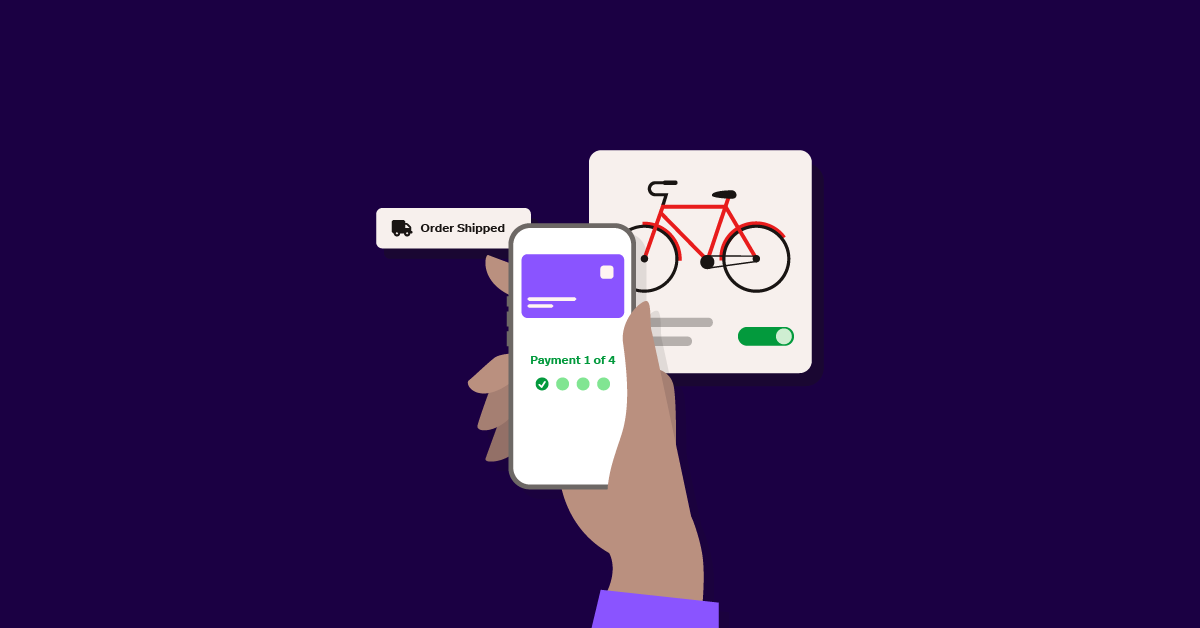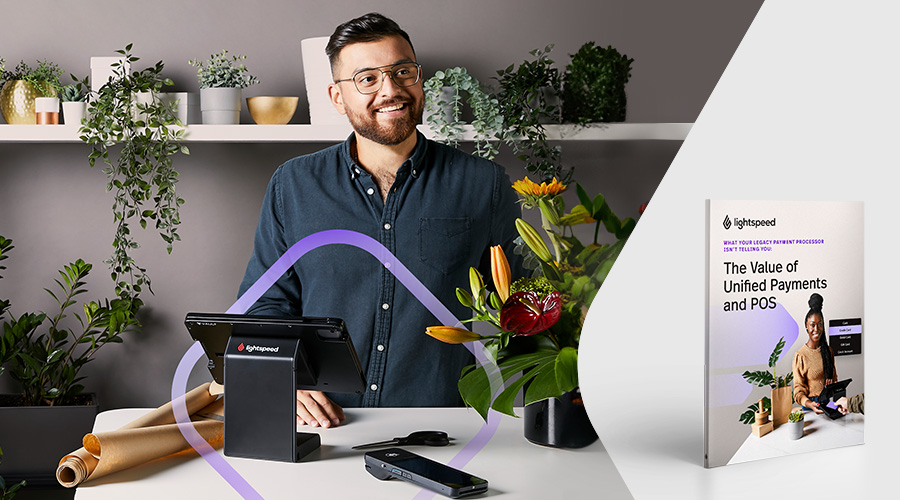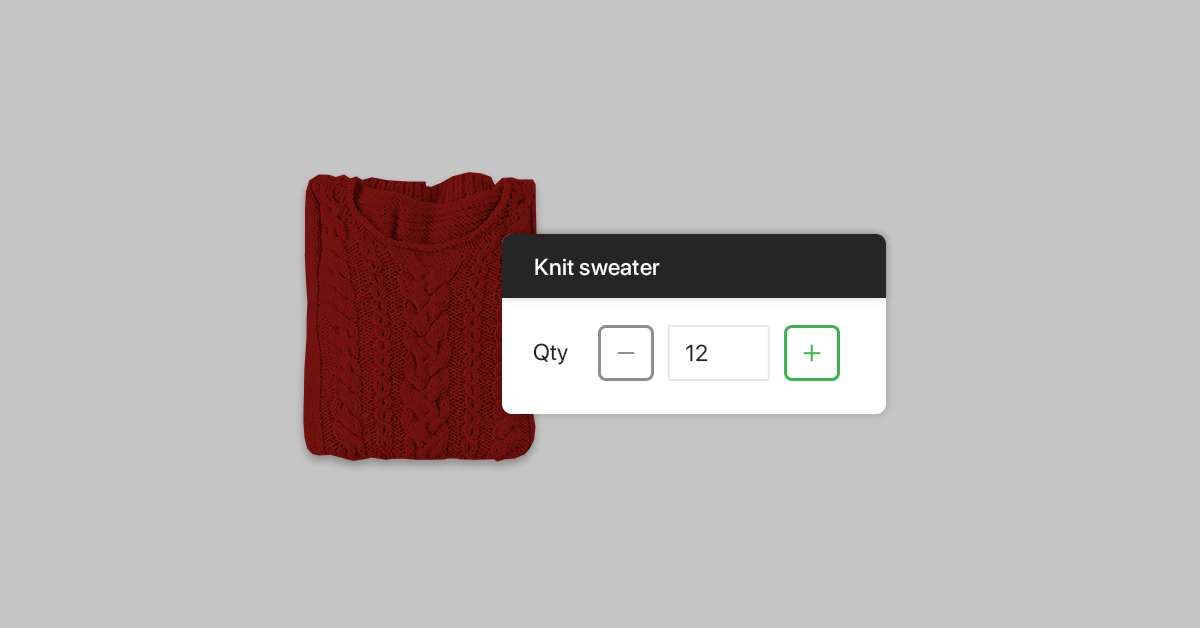
Making payments has never been easier. We’ve gone from desperately searching the bottom of our bags for spare change, to hunting down an ATM to simply tapping our card at a point of sale. But if there’s one thing we can rely on not changing, it’s our collective appetite for convenience. Along with greater flexibility and security, it’s safe to say payment trends and options will continue to evolve.
For merchants, keeping track of new trends in payments ensures you keep customers happy, stay on top of the latest in security advancements and minimize errors in processing. So what’s next in payment trends? Let’s examine what merchants can expect in 2024.
We’ll cover:
- Mobile payments
- Mobile wallets
- Peer to peer payments (P2P)
- Buy now pay later (BNPL)
- Crypto payments
- Biometric payments
- Real-time payments
- Open banking
- Central bank digital currencies (CBDC)
- Social commerce payments
- Embedded payment partners
- Offering the best customer experience
Your Guide to Unified POS and Payments
Find out how you can grow your business with a unified POS and payments solution.

1. Mobile payments
As in 2023, mobile payments will continue to grow in popularity in the next year. Mobile payments are the top new payment style to emerge in recent years. In the United States alone, the mobile payment market was valued at $53.5 billion in 2022. It is anticipated to grow to over $607.9 billion by 2030.These methods are ideal for large and small business owners as it allows them to meet customers wherever they are. After investing in a point of sale, payment processing is relatively simple. Payments can be received through a tablet, smartphone or watch.
The primary benefit of mobile payments, outside of the contactless element, is the agility. With no need to insert a card and key in details or wait for change—both the customer and the merchant benefit from the simplicity and speed of the process.
There are 5 types of payments that fall under the umbrella of this specific category:
- Mobile payments at point of sale
- SMS payments
- Mobile wallet
- Mobile ecommerce
- Peer to peer
Let’s take a closer look at some of these options.
2. Mobile wallet
Mobile wallets are only going to get more popular. In fact, transactions are expected to grow from around $802 billion in 2023 to $929.8 billion in 2024. A mobile wallet, sometimes referred to as a digital wallet or e-wallet, is an online service, software program or electronic device that allows you to make transactions with another party, for example Apple Pay or Google Pay, exchanging digital currency units for goods and services.
According to a 2023 Forbes study, 53% of Americans use digital wallets more often than other traditional payment methods, including credit and debit cards.
Fast, secure and convenient, mobile wallets have many advantages. Most notably, they expedite the process of sending and receiving funds—which can all be done in app.
3. P2P (Peer to Peer) Payment Apps
Peer-to-peer payment apps are intended to send money directly to another person. Popular apps such as PayPal and Venmo allow users to transfer funds from their bank account to another individual’s account seamlessly using a mobile device.
For example, if you go out for dinner with a friend and they pick up the tab, you could simply open your peer-to-peer app of choice and use their phone number or email address to send the amount.
The convenience and ease of these transactions makes P2P apps very popular. However, one common critique of P2P apps is the potential for fraud. These types of apps can be taken advantage of in scams and phishing attacks. To combat this, you’ll see continuing innovations in this space to strengthen security, such as the widespread use of biometric authentication.
For the most part, these transactions are free, with payments made directly from the P2P account or a linked bank account. However, some providers charge a 2-3% fee for payments drawn from a credit or debit card. Lesser known benefits of P2P, are optional debit cards for certain providers that allow you to spend your balance and Google Pay syncs with your Google Account.
4. Buy Now Pay Later
Buy now, pay later (BNPL) as its name would suggest is a type of loan. As the cost of living continues to rise, this mode of payment has become more of an alluring option to customers.
How does BNPL work? It divides the purchase price into equal installments, with the first due at check-out, allowing the buyer the opportunity to purchase now and pay the remaining balance over time. An advantage of this model is minimal or 0% financing and no initial credit check.
North Americans are becoming increasingly on board with BNPL. It’s especially useful for large purchases, and it’s easier for consumers to justify these buying decisions when they know they can pay for them over time rather than in one go.
However, the landscape may change for these companies in 2024, with traditional financial institutions starting to offer similar services.
According to the Consumer Protection Financial Bureau, from 2019 to 2021 BNPL loans from five primary lenders grew more than 970%.
5. Cryptocurrency payments
Cryptocurrency, often referred to as crypto, is any form of currency that lives virtually or digitally. It doesn’t use major banks as a method for transactions. It’s a peer-to-peer, decentralized digital payment system.
Cryptocurrencies run on a distributed public ledger. This public ledger is called blockchain and acts as a record of all transactions updated and held by currency holders. Owning cryptocurrency means you have nothing tangible.
Some examples of types of crypto are Bitcoin, Ripple and Ethereum. If you want to buy it, you can choose a platform and fund your own account or get a broker to do this for you. The benefits of crypto are its accessibility, security and privacy. Arguably the greatest allure of crypto though is its decentralized nature, offering diversification from traditional stocks, bonds and financing with big banks.
6. Biometric payments
Biometric payments is another emerging type of digital transaction. Once used primarily by security agencies and law enforcement, these methods have made big advances and are now mainstream with both Visa and Mastercard, offering biometric cards.
Biometric payments use physical characteristics and their authentication to identify an individual for accepting funds. There is a range of biometric authentication methods including iris, retina and face recognition, DNA matching and vein patterns.
Although biometric identification is frequently used as part of a 2-step authentication process, it comes with some benefits. Once again, convenience is a big advantage, making it easy and effortless for customers to identify themselves.
7. Real-time payments
Expect banks, businesses and consumers to make greater use of real-time payments in 2024.
A real-time payment is the instantaneous transfer of funds from one account to another. Instead of the typical 1-3 days, there’s no waiting. Payment authorization occurs in real-time, so the payer can see a deduction in their account right away.
This is a game-changer for businesses who don’t want to wait for settlement payouts. Instead, they receive payouts to their accounts daily. Examples of applications that facilitate real-time payments are PayPal and Venmo as well as Interac e-Transfer.
However, it’s not limited to those–payments between businesses (B2B), businesses and their suppliers, consumer to business, and more can all be facilitated in real-time.
8. Open banking
Open banking refers to the use of APIs to share financial data (with the consent of the consumer) to third-party services. It plays a critical role in the evolution of the financial services industry. These third-party providers can range from fintech and SaaS companies to digital platforms.
Traditionally, banks and consumers were in an insular relationship, meaning that only they had access to the consumers’ financial data. With open banking, consumers and businesses are centered, increasing access to financial products and services that allow them to better manage their funds.
Investment banking apps like Robinhood and Wealthsimple are just a couple of examples of businesses that make use of open banking.
9. Central bank digital currencies (CBDC)
One of the relatively newer payment trends is being implemented across governments: a digital version of a country’s currency. Unlike cryptocurrencies, CBDCs are regulated, with a value fixed by the country’s central bank.
The future of payments is digital, and governments around the world are trying to develop ways to keep up. CBDCs represent the latest foray into a cashless world as fewer people use physical currencies.
You’ll probably see more announcements about CBDCs in 2024 and beyond–but keep in mind that this form of currency is complex, carrying implications for the financial system as a whole, monetary policies and systems related to banking.
10. Social commerce payments
Revenue generated from social commerce is expected to surpass six trillion dollars by 2030–a practically unfathomable number.
Social media platforms have truly transformed the way people shop. From Facebook to Instagram to TikTok (specifically in the last few years), more and more consumers are heading to these apps for the latest recommendations, to learn about popular products and actually shop within the platforms themselves.
Businesses can set up accounts on Facebook, TikTok and Instagram, where consumers can directly purchase products. TikTok Shop was just launched in the US in 2023, and don’t expect it to go anywhere. As more users flock to these apps, the more businesses can sell their products to create a new revenue stream.
That’s why it’s more important now than ever before for companies to get online and start accepting payments on these apps–there’s a whole world of consumers they can tap into.
11. Investing in a sophisticated payment partner
As a means to stay on top of payment trends, it’s vital for merchants to invest in robust technology partners. In today’s market the most relevant and pervasive technology trends are embedded and mobile payments. Crypto, for example, has not been widely adopted yet and it remains to be seen if this will even happen in the years to come.
Lightspeed Payments is an embedded payment system that allows your hardware and software (credit card processing and inventory) to be connected for overall efficiency.
This type of setup also elevates your security with end to end encryption for all transactions and in Lightspeed’s case, 24/7 monitoring. Using a singular system also means that training employees is smoother with a support system in place that’s under one roof.
As Lightspeed customer Bruce Jone of retailer Philip Morris describes the simplicity, “The till operators are only pressing one button, feeding transactions straight through to the card machine. So that makes it quick. It has reduced errors completely. We no longer have to buy credit card rolls. So that reduces costs and makes it a lot more efficient.”
Learn more about embedded payments in our detailed article.
12. Striving for a premium customer experience
Exploring advanced payment options is the key to optimizing revenue. Creating a more seamless process for your consumers, with security and minimal errors, allows for an ideal shopping experience. It’s essential for businesses to adapt and evolve to meet shifting economic conditions.
As our world becomes more demanding, customers continue to seek simpler solutions to minimize their day to day stressors, including frictionless buying. And this is why implementing an embedded payment solution is more important than ever.
Lightspeed customer Melissa Joy Manning saved time with Lightspeed Payments. The jewelry store now has instant reporting on their payments, giving the team a much better picture of their performance and financials. Plus, the checkout process is more efficient: “It’s much easier for us to close the sale and have the customer on their way, happy with what they purchased and the purchasing process,” says Melissa Joy Manning, owner and designer.
Solutions like Lightspeed Payments enable you to accept multiple payment methods, streamline checkout and simplify reconciliation—all while enjoying transparent and cost-effective rates.
To learn more about Lightspeed’s unified Payments and POS platform, talk to one of our experts today.
FAQs
What is the future of payments?
The payments world will continue to go digital. Keep an eye on social commerce, mobile wallets, P2P payment apps, central bank digital currencies (CBDCs) and other related trends as we head into 2024.
What is the most popular method of payment today?
Credit and debit cards hold strong as the most popular payment methods. More people are adopting digital wallets, though, which store credit and debit information so people can make payments seamlessly on their mobile devices.
What is the future of faster payments?
Real-time payments are the future of faster payments. More businesses and consumers will adopt real-time payments to receive payouts faster than ever. Open banking also facilitates faster payments, with consumers in direct control of what they can do with their financial information.

News you care about. Tips you can use.
Everything your business needs to grow, delivered straight to your inbox.



